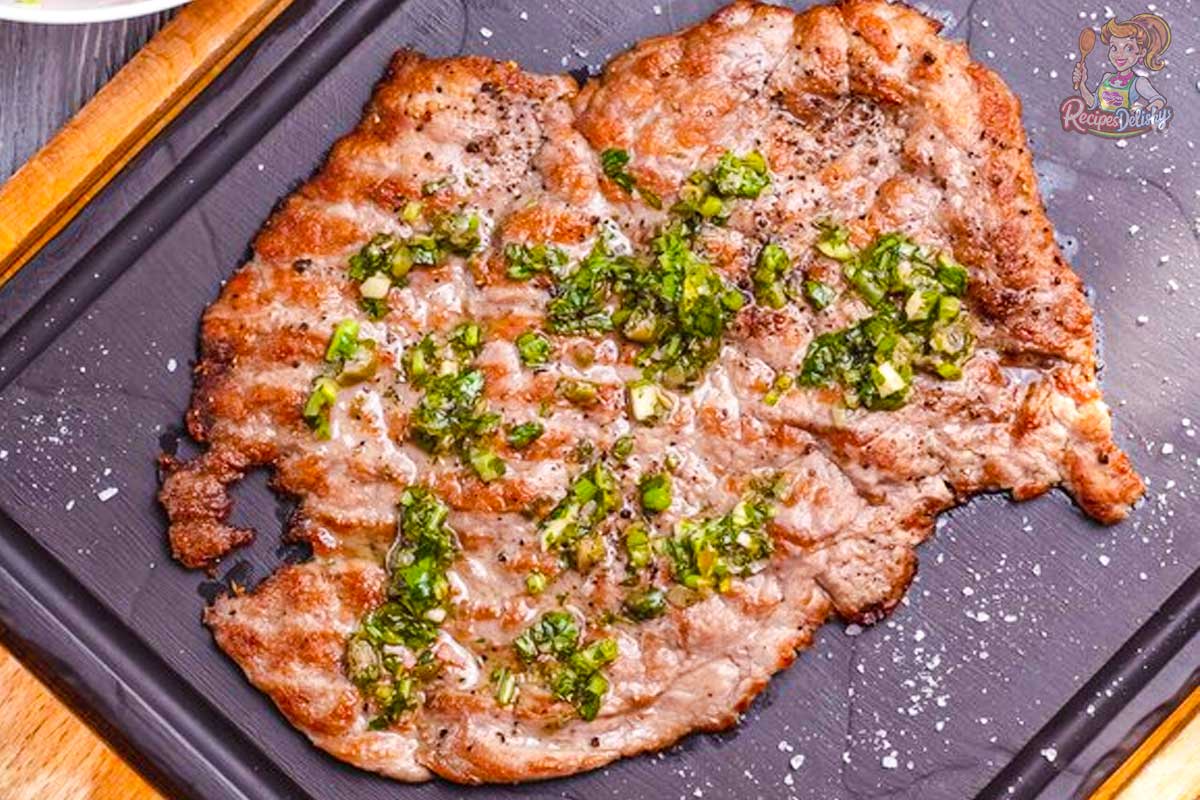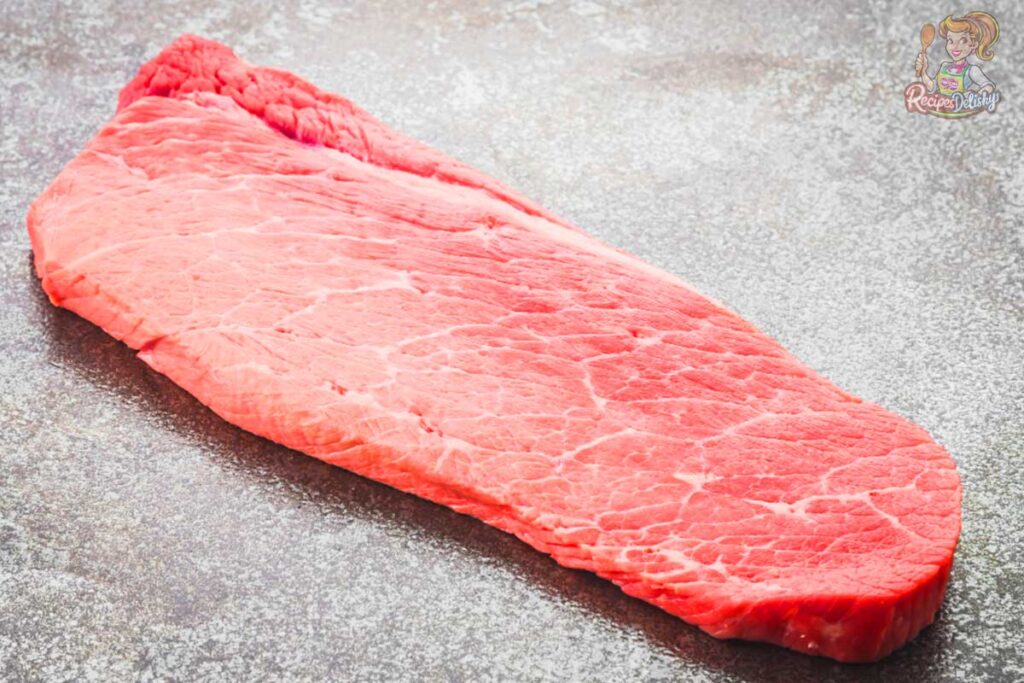Cooking Methods for Thin Steak
Thin steaks, due to their reduced thickness, cook quickly and can be prepared using a variety of methods. Each technique brings out different flavors and textures in the meat, making it crucial to understand the nuances of each method to achieve the best results. Here’s how to master the cooking of thin steaks with several popular methods.
Pan Searing
Pan searing is one of the most common and effective ways to cook a thin steak, providing a rich, caramelized crust and juicy interior.
Equipment and Setup
- Pan Choice: A heavy-bottomed skillet, preferably cast iron, is ideal as it maintains high heat and distributes it evenly.
- Heating the Pan: Heat the pan over high heat until it is very hot. You can test this by adding a few drops of water; they should evaporate instantly.
Cooking Process
- Add Oil: Just before placing the steak in the pan, add a small amount of high-smoke-point oil, such as canola or grapeseed oil.
- Placing the Steak: Lay the steak in the pan using tongs to avoid splashes. Do not overcrowd the pan; cook in batches if necessary.
- Cooking Time: Cook the steak for about 1-2 minutes on each side, depending on thickness and desired doneness.
- Turning the Steak: Flip the steak only once to ensure a good sear on both sides.
- Adding Flavors: In the last minute of cooking, you can add butter, garlic, and fresh herbs to the pan, basting the steak with the melted butter for extra flavor.
Grilling
Grilling gives the steak a distinctive smoky flavor and appealing grill marks, perfect for a summer barbecue or a flavorful dinner.
Grill Preparation
- Preheating the Grill: Preheat your grill to a high temperature before adding the steak to ensure it sears quickly, locking in juices.
- Oil the Grates: Lightly oil the grill grates to prevent sticking and achieve clean grill marks.
Grilling Technique
- Placing the Steak: Place the steak on the hottest part of the grill.
- Cooking Time: Grill the steak for about 1-2 minutes per side.
- Flipping: Use tongs to flip the steak halfway through cooking to ensure even grilling.
Broiling
Broiling is a great alternative to grilling that also uses high heat, coming from above, to cook the steak quickly and efficiently.
Broiler Setup
- Positioning the Rack: Position the oven rack so the steak will be about 4-5 inches from the broiler element.
- Preheating the Broiler: Turn on the broiler to preheat before adding the steak.
Broiling Steps
- Steak Placement: Place the steak on a broiler pan or a baking sheet lined with aluminum foil.
- Broiling Time: Broil the steak for about 1-2 minutes per side, monitoring closely since the high heat can cook the steak very quickly.
Final Tips
Regardless of the cooking method chosen, there are a few key points to remember to ensure your thin steak turns out perfectly:
- Doneness: Due to their thin nature, these steaks are best served medium-rare to medium. Use a meat thermometer to check for doneness; 135°F (57°C) for medium-rare.
- Resting the Meat: Allow the steak to rest for at least 5 minutes after cooking. This helps the juices redistribute throughout the meat, ensuring a juicy, flavorful steak.
By mastering these cooking methods, you can enjoy perfectly cooked thin steaks that are flavorful, juicy, and tender, no matter the occasion. Whether you prefer the char of the grill, the sear of the pan, or the convenience of the broiler, each method provides its own unique benefits and flavors.
For a comprehensive guide on different beef cuts and their best cooking methods, visit the American Meat Science Association.
Tips for Perfectly Cooked Thin Steak
Cooking thin steak to perfection requires precision and attention to detail. The right techniques can turn a simple meal into a gourmet experience. Here are some essential tips to ensure your thin steak is cooked perfectly every time.
Managing Heat
- High Heat: Thin steaks benefit from high heat for a short duration. This approach sears the exterior for flavor while keeping the interior tender.
- Preheated Pan or Grill: Whether using a pan or grill, ensure it is thoroughly preheated before adding the steak. Doing this ensures a better sear and reduces sticking.
Timing is Crucial
- Brief Cooking Time: Due to their thinness, these steaks cook in just a few minutes. Typically, 1-2 minutes per side is sufficient for medium-rare, depending on the thickness.
- Use a Timer: Keep track of cooking time with a timer to avoid overcooking, which is a common mistake with thin steaks.
Checking Doneness
- Visual Cues: Look for a golden-brown crust as a sign of proper searing.
- Touch Test: Press the steak lightly with your finger; it should feel firm but with a slight bounce for medium-rare.
- Meat Thermometer: For precise cooking, use a meat thermometer. Aim for 135°F (57°C) for medium-rare.
Resting the Steak
- Allow to Rest: Let the steak rest for about 5 minutes after cooking. This allows the juices to redistribute throughout the meat, enhancing flavor and tenderness.
- Cover Lightly: Tent the steak with foil during resting to keep it warm without cooking it further.
Common Mistakes to Avoid
Even experienced cooks can make errors when cooking thin steaks. Here are some common pitfalls to avoid:
Overcooking
- Rapid Cooking: Thin steaks cook very quickly. Leaving them on the heat too long can lead to a tough, dry steak.
- High Vigilance: Stay attentive and ready to remove the steak from the heat as soon as it reaches the desired doneness.
Underseasoning
- Flavor Depth: Salt and spices should be applied just before cooking to enhance the meat’s flavor without drawing out moisture prematurely.
- Balanced Seasoning: Ensure even seasoning across the steak for consistent flavor in every bite.
Crowding the Pan or Grill
- Sufficient Space: Cook steaks in batches if necessary to avoid overcrowding. This ensures each steak has enough room to sear properly rather than steam.
Neglecting to Preheat
- Cookware Readiness: A pan or grill that hasn’t been properly preheated will result in a steak that’s cooked unevenly and may stick to the cooking surface.
Forgetting to Rest the Meat
- Skipping Rest: Failing to let the steak rest can cause it to lose more juices when cut, leading to a drier, less flavorful steak.
- Resting Time: Give the steak enough time to rest but not so long that it cools down completely before serving.
By following these tips and avoiding the common mistakes, you can consistently prepare delicious, perfectly cooked thin steaks. Whether you’re aiming for a simple weeknight dinner or a special occasion meal, the right approach will ensure your steak is a highlight.
For additional culinary tips and techniques, explore our guide on What Is The Difference Between Lasagna And Pasta Al Forno?.
FAQ: Cooking Thin Steaks
Thin steaks are a delicious option for a quick, flavorful meal, but their quick cooking time often raises many questions about preparation and cooking techniques. Here are some frequently asked questions and their answers to help you achieve perfect thin steaks every time.
How long should I cook thin steak?
The cooking time for a thin steak depends on the method used and the desired level of doneness. Generally, for a steak that’s about 1/2 to 3/4 inch thick:
- Pan Searing: Cook for about 1-2 minutes per side for medium-rare.
- Grilling: Grill for about 1-2 minutes per side for medium-rare.
- Broiling: Broil for about 1-2 minutes per side for medium-rare.
Always use high heat and keep a close eye on the steak as it cooks quickly.
Can I cook a frozen thin steak?
Yes, you can cook a frozen thin steak, but for optimal flavor and texture, it’s best to thaw the steak first. If you choose to cook it from frozen:
- Increase Cooking Time: Expect to add a few more minutes per side compared to cooking a thawed steak.
- Use Lower Heat: Start on a lower heat to gently begin the thawing process, then increase to high heat to finish and sear.
What is the best way to season a thin steak?
Seasoning a thin steak is crucial for enhancing its flavor. Here are some tips:
- Salt and Pepper: Basic seasoning with salt and freshly ground black pepper should be done right before cooking to avoid drawing moisture out of the steak.
- Marinades and Rubs: For added flavor, especially for tougher cuts like skirt or flank steak, use a marinade for at least 30 minutes before cooking. Dry rubs can also be applied just before cooking to create a flavorful crust.
How can I tell if my thin steak is cooked?
The best way to determine if your steak is cooked to your liking is to use a meat thermometer. Here are the temperatures for different levels of doneness:
- Rare: 120°F to 125°F (49°C to 52°C)
- Medium Rare: 130°F to 135°F (54°C to 57°C)
- Medium: 140°F to 145°F (60°C to 63°C)
- Well Done: Over 150°F (65°C)
Alternatively, you can use the touch test, where the firmness of the steak correlates to its doneness.
Should I let my thin steak rest after cooking, and why?
Yes, resting your thin steak after cooking is important, even for just a few minutes. Resting allows the juices to redistribute throughout the meat, resulting in a juicier, more flavorful steak. Cover it loosely with foil and let it rest for about 5 minutes.
What are the best side dishes to serve with thin steak?
Thin steak pairs well with a variety of side dishes. Here are some ideas:
- Vegetables: Steamed or grilled vegetables, such as asparagus, broccoli, or bell peppers.
- Starches: Mashed potatoes, roasted potatoes, or a light pasta dish.
- Salads: A crisp green salad or a tomato and onion salad drizzled with balsamic vinegar.
By addressing these FAQs, you can improve your skills and confidence in cooking thin steaks, ensuring delicious results every time you fire up the grill or stove.


